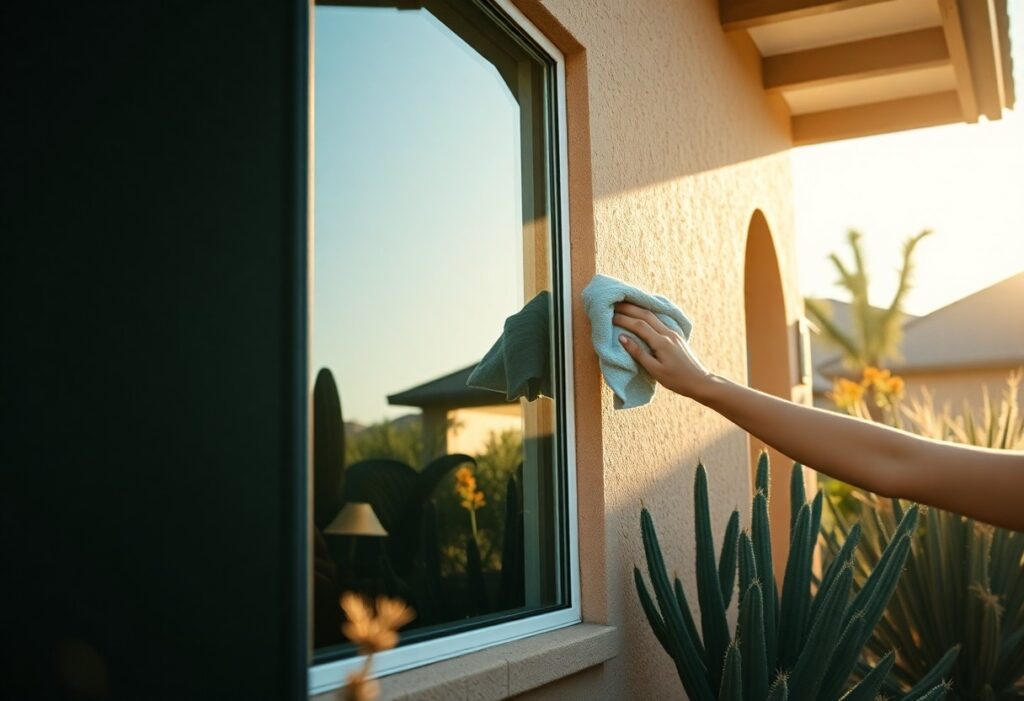A Complete Guide To Maintaining Your Window Tinting In Arizona
This guide offers you vital insights on how to preserve your window tinting in Arizona’s harsh climate. With extreme sunlight and temperatures, ensuring your tinting remains in optimal condition is vital for protecting your car’s interior and enhancing your driving experience. You’ll learn effective maintenance tips that will help you avoid costly repairs and ensure longevity. For additional expert advice, check out the Top 6 Tips on Window Tinting and It’s Benefits. Key Takeaways: Regular Cleaning: Keep your window tinting clear by using a gentle cleaner and a soft cloth to avoid scratching the film. UV Protection: Ensure your tint has a high UV protection level to safeguard your vehicle’s interior from sun damage. Professional Installation: Consider having your window tint professionally applied to ensure optimal durability and compliance with Arizona regulations. Understanding Window Tinting The world of window tinting is multifaceted, especially in a sun-drenched state like Arizona. Understanding the basics of window tinting can help you make informed decisions for your vehicle and home. Window tinting not only enhances your vehicle’s aesthetic appeal but also provides several practical benefits, including UV protection and temperature regulation. It’s vital to know the types of window films available and how they perform under Arizona’s intense sunlight. Types of Window Tinting Window films come in various types, each designed to serve specific needs. Here are some of the most common types: Dyed Window Film Affects appearance and reduces glare. Metalized Window Film Provides durability and heat resistance. Ceramic Window Film Blocks UV rays without interfering with electronics. Hybrid Window Film Combines benefits of dyed and metalized films. Infrared Rejecting Film Specifically designed to block heat. Recognizing the differences in these films can help you select the right option based on your needs and preferences. Factors Affecting Window Tinting Durability There’s a lot to consider when it comes to the durability of your window tinting. The quality of the film, the installation process, and environmental factors such as sunlight exposure play significant roles in how well your tint lasts. High-quality films typically provide better longevity and performance, ensuring that you enjoy the benefits for years to come. Quality of the film Installation method Climate and weather conditions Exposure to UV rays Maintenance practices Perceiving the importance of these factors can lead to a more satisfying experience with your window tinting. Tinting durability can also be influenced by regular maintenance and care. This includes cleaning methods and the products you use on your tinted windows. Using harsh chemicals or improper techniques can damage the film and diminish its lifespan. Your attention to these details is vital for maintaining the protective attributes of your tint. Cleaning methods Environmental influences Regular inspections Improper installation signs Manufacturer’s recommendations Perceiving how your actions affect window tint durability can help you avoid common pitfalls. Pros and Cons of Different Tint Types You might be wondering what the best type of window tint is for your vehicle or home. Knowing the benefits and drawbacks of each type can guide you in making a decision that aligns with your needs. Below is a comparison of the prevalent tint types, showcasing their respective pros and cons. Pros and Cons of Different Tint Types Dyed Window Film Inexpensive, adds aesthetic appeal. Metalized Window Film Highly durable, reduces glare. Ceramic Window Film Excellent heat rejection without interference. Hybrid Window Film Combines the best of two worlds. Infrared Rejecting Film Specifically designed to block heat effectively. Factors affecting your decision may include initial costs versus long-term benefits, durability, and specific applications. As you weigh the pros and cons of different tint types, you should consider how they meet your unique needs and lifestyle. Understanding these details about window tinting can empower you to make informed decisions that contribute to your comfort and safety in Arizona’s harsh climate. Keep in mind that the right choice can optimize benefits while minimizing drawbacks, ensuring that your investment brings satisfaction for years to come. Tips for Maintaining Window Tinting Clearly, maintaining your window tinting is imperative to preserving its functionality and appearance. If you want your window tint to last for years, consider the following tips: Use a gentle detergent solution to clean your tinted windows. Avoid using abrasive materials that can scratch the surface of the tint. Keep your car parked in a shaded area whenever possible to reduce heat exposure. Avoid rolling down your windows for at least three to five days after installation. Consult a professional if you notice any bubbling or peeling. Any proactive maintenance efforts you undertake will ensure that your window tint remains effective and visually appealing. Best Cleaning Products for Window Tint Tint maintenance starts with using the right cleaning products. You should always opt for a mild, non-ammonia based cleaner to avoid damaging the window tint film. Look for products specifically labeled for use on tinted windows or a simple mix of soap and water, which is a safe and effective alternative. Avoid any cleaners with harsh chemicals or abrasives. Additionally, microfiber cloths are ideal for cleaning tinted windows. Their soft fibers are non-abrasive and won’t scratch the film. Always ensure that the cloth is clean and dry before use to prevent any potential damage. By choosing appropriate cleaning supplies, you extend the life of your window tint significantly. Recommended Cleaning Techniques Any time you clean your tinted windows, it’s imperative to use the right techniques. Start by gently wiping the surface with a microfiber cloth dampened in your chosen cleaning solution. Use soft, circular motions to lift any dirt or grime without applying excessive pressure. This method minimizes the risk of ruining the tint due to harsh scrubbing. Also, it’s best to work on the windows one at a time to ensure thorough cleaning. Always dry the window with a separate microfiber cloth afterward to prevent streaks. Keeping the film free of debris not only makes it look better but also keeps it functioning properly. To maintain your window tint, make it a habit to clean your windows regularly,






